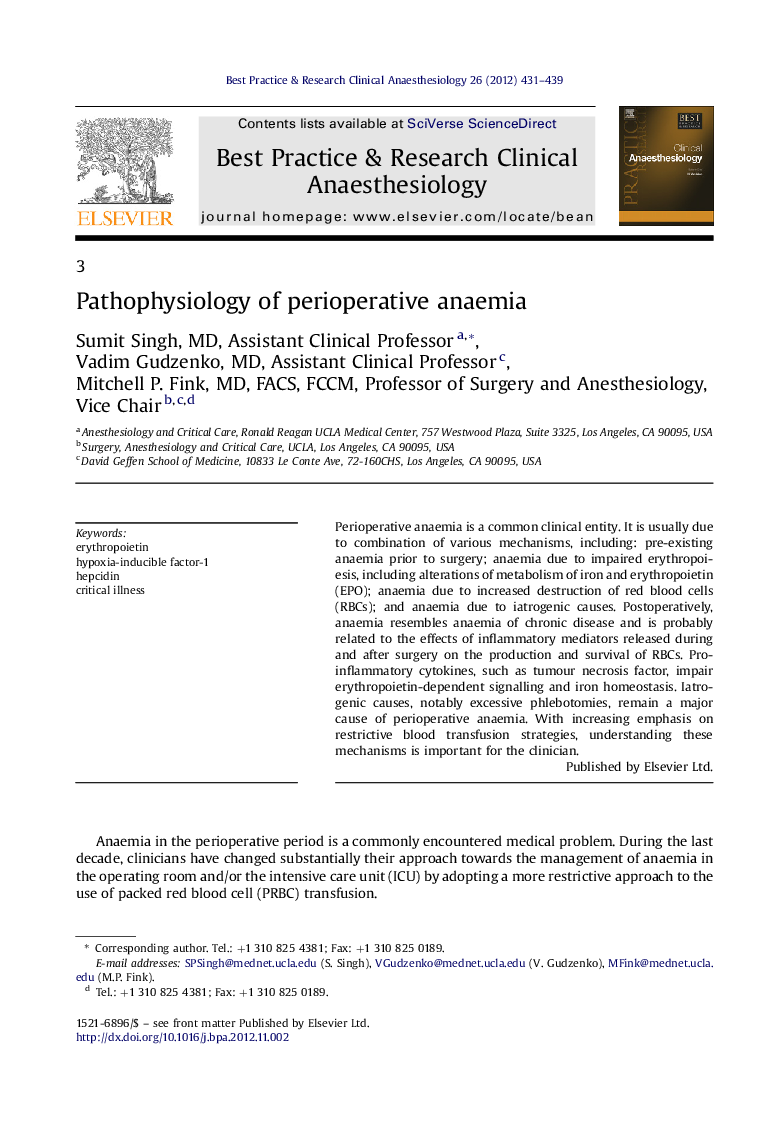| Article ID | Journal | Published Year | Pages | File Type |
|---|---|---|---|---|
| 2748479 | Best Practice & Research Clinical Anaesthesiology | 2012 | 9 Pages |
Perioperative anaemia is a common clinical entity. It is usually due to combination of various mechanisms, including: pre-existing anaemia prior to surgery; anaemia due to impaired erythropoiesis, including alterations of metabolism of iron and erythropoietin (EPO); anaemia due to increased destruction of red blood cells (RBCs); and anaemia due to iatrogenic causes. Postoperatively, anaemia resembles anaemia of chronic disease and is probably related to the effects of inflammatory mediators released during and after surgery on the production and survival of RBCs. Pro-inflammatory cytokines, such as tumour necrosis factor, impair erythropoietin-dependent signalling and iron homeostasis. Iatrogenic causes, notably excessive phlebotomies, remain a major cause of perioperative anaemia. With increasing emphasis on restrictive blood transfusion strategies, understanding these mechanisms is important for the clinician.
